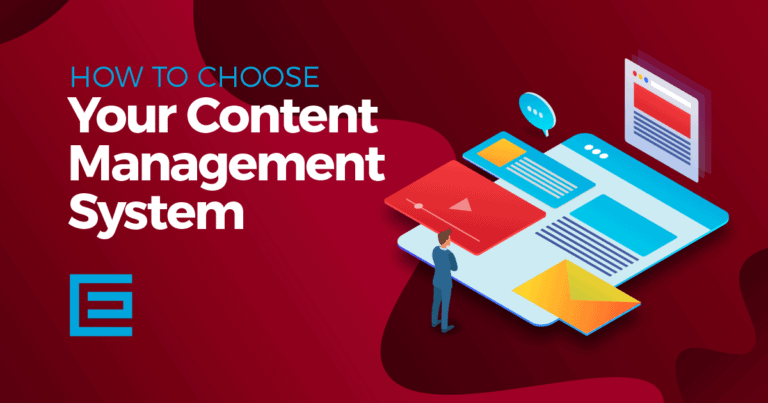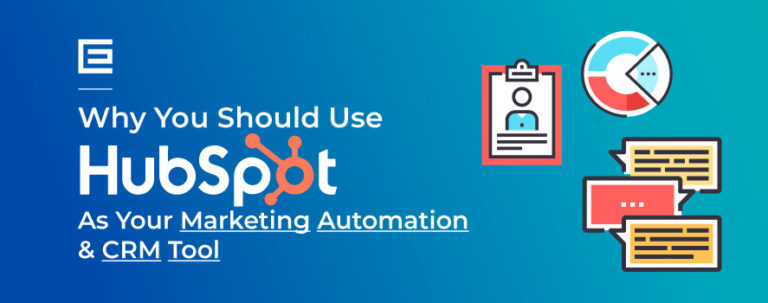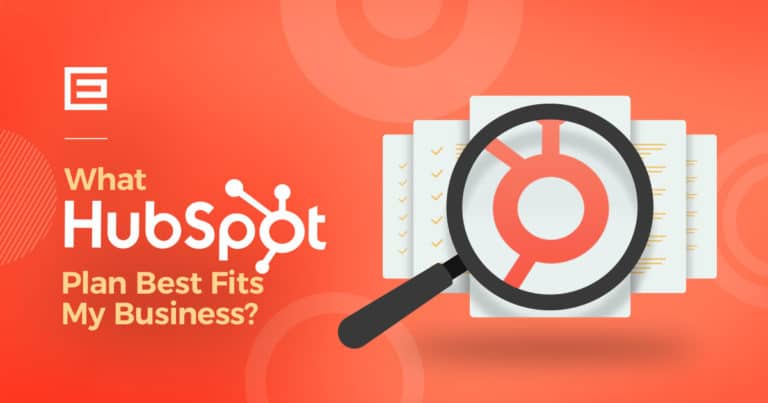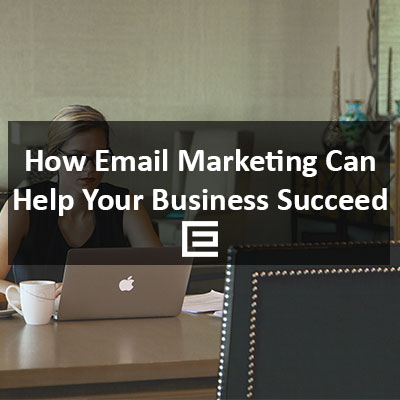Email marketing automation workflows enable businesses to maintain consistent and meaningful communication with their audience. This consistent engagement is key to building a strong brand presence and staying ahead of competitors.
At its core, this system involves the creation and implementation of automated email sequences that are triggered by specific actions or behaviors of recipients. These workflows are designed to deliver relevant content at optimal times, without the need for constant manual intervention.
In this guide, we’ll explore mastering email marketing automation workflows. Uncover expert strategies, best practices, and future trends to elevate your digital marketing. Perfect for marketers seeking to enhance engagement, efficiency, and ROI through sophisticated email automation techniques.
- 1Understanding Email Marketing Automation
- 2Types of Email Marketing Automation Workflows
- 3Setting Up Email Marketing Automation Workflows
- 4Best Practices for Email Marketing Automation
- 5Advanced Strategies in Email Marketing Automation
- 6Common Challenges and Solutions
- 7Measuring Success in Email Marketing Automation
- 8FAQs
- 9Final Thoughts
Understanding Email Marketing Automation
What is Email Marketing Automation?
Email marketing automation is a strategic approach that leverages software to create, deploy, and manage email campaigns automatically. This technology enables businesses to send targeted, timely, and personalized email messages to their audience, triggered by specific actions or behaviors. The automation aspect means that once the system is set up and the criteria are defined, emails are sent out automatically without the need for manual intervention.
The Role of Automation in Email Campaigns
At its heart, email marketing automation is about sending the right message to the right person at the right time, without the need for constant oversight. It’s a shift from one-size-fits-all mass email blasts to a more nuanced, targeted approach. This method ensures that subscribers receive emails that are relevant to their interests and interactions with the brand, enhancing the effectiveness of email marketing efforts.
Key Components of Email Marketing Automation Workflows
Trigger Events
One of the fundamental components of email marketing automation is the trigger event. These are specific actions taken by users—such as signing up for a newsletter, making a purchase, or abandoning a shopping cart—that activate the automated email workflow.
Segmentation and Personalization
Segmentation involves dividing the email list into smaller, more focused groups based on certain criteria like demographics, purchase history, or engagement level. Personalization goes a step further by tailoring the content of the emails to the individual preferences and behaviors of each recipient.
Email Content and Design
The content and design of the emails are crucial. They need to be engaging, informative, and reflective of the brand’s voice. Automated emails should also be optimized for different devices, ensuring a seamless experience whether the recipient is on a desktop or a mobile device.
Analytics and Reporting
Analytics and reporting tools are essential for monitoring the performance of email campaigns. These tools provide insights into metrics like open rates, click-through rates, and conversion rates, helping businesses understand what works and what needs improvement.
Benefits of Email Marketing Automation
Increased Efficiency and Time Savings
By automating repetitive tasks, businesses save time and resources. This efficiency allows marketing teams to focus on more strategic tasks, such as content creation and campaign planning.
Enhanced Customer Experience
Automated emails provide a more personalized and relevant experience for recipients. This relevance can lead to increased engagement, loyalty, and customer satisfaction.
Improved Conversion Rates
Targeted and personalized emails are more likely to resonate with recipients, leading to higher open and click-through rates and, ultimately, better conversion rates.
Scalability
Email marketing automation allows businesses to scale their marketing efforts efficiently. As the audience grows, the system can handle the increased volume without additional resource allocation.
Data-Driven Decision Making
The analytics provided by email marketing automation tools offer valuable insights into customer behavior and preferences, enabling businesses to make informed decisions and continuously refine their marketing strategies.
In summary, email marketing automation is a powerful tool that offers numerous benefits, including increased efficiency, enhanced customer experience, and improved conversion rates. By understanding and implementing the key components of email marketing automation workflows, businesses can effectively engage with their audience, drive sales, and foster lasting customer relationships.
Types of Email Marketing Automation Workflows
Email marketing automation workflows come in various forms, each designed to target specific aspects of customer engagement and conversion. Understanding these different types can help businesses tailor their email marketing strategies to meet diverse objectives effectively.
Drip Campaigns
The Concept of Drip Campaigns
Drip campaigns are a series of emails sent out at predetermined intervals. These emails ‘drip’ relevant information to prospects over time, keeping the audience engaged without overwhelming them.
Application and Effectiveness
They are particularly effective for educational content, brand storytelling, or gradually introducing a product or service. Drip campaigns help in building a narrative and leading the recipient through a well-thought-out journey, culminating in a call to action.
Nurture Campaigns
Nurturing Leads into Customers
Nurture campaigns focus on developing relationships with potential customers. These workflows are designed to nurture leads by providing valuable content and information that aligns with their interests and needs.
Strategy and Content
The strategy involves sending a series of targeted emails that educate and inform the recipient, gradually guiding them down the sales funnel. The content is often tailored based on the recipient’s interaction with previous emails or website behavior.
Welcome Email Workflows
First Impressions Matter
Welcome email workflows are triggered when a new subscriber joins an email list. These emails are crucial for making a good first impression and setting the tone for future communication.
Content and Purpose
The content typically includes a warm welcome message, an introduction to the brand, and what the subscriber can expect in terms of content and frequency. It’s an opportunity to engage new subscribers and encourage them to take the next step in their journey with the brand.
Lead Nurturing Workflows
Turning Prospects into Buyers
Lead nurturing workflows are similar to nurture campaigns but are more focused on moving leads through the sales funnel. These workflows are tailored to the lead’s stage in the buying process.
Tactics and Personalization
They often involve a higher degree of personalization, using data like past purchases, page visits, and download history to send relevant and compelling content that nudges the lead closer to a purchase.
Re-Engagement Workflows
Reviving Dormant Relationships
Re-engagement workflows target subscribers who have become inactive or less engaged over time. The goal is to rekindle their interest in the brand and bring them back into the active customer fold.
Techniques and Incentives
This might involve sending emails that highlight what they’ve missed, updates to products or services, or special offers to lure them back. The key is to provide a compelling reason for them to re-engage with the brand.
Abandoned Cart Workflows
Recovering Lost Sales
Abandoned cart workflows are triggered when a customer adds items to their online shopping cart but leaves the site without completing the purchase. These emails aim to recover potentially lost sales.
Strategy and Timing
The strategy involves sending a reminder, often with an incentive like a discount or free shipping, to encourage the customer to complete their purchase. Timing is crucial, with the first email typically sent within hours of the cart abandonment.
Each type of email marketing automation workflow serves a specific purpose in the broader context of a digital marketing strategy. By leveraging these workflows, businesses can effectively guide prospects and customers through different stages of their journey, from awareness and engagement to conversion and retention.
Setting Up Email Marketing Automation Workflows
Implementing email marketing automation workflows can significantly enhance the efficiency and effectiveness of a business’s marketing efforts. However, setting up these workflows requires careful planning and execution. Below are key steps to consider when establishing email marketing automation workflows.
Choosing the Right Email Automation Software
Evaluating Features and Compatibility
The first step in setting up an email marketing automation workflow is selecting the appropriate software. This choice should be based on several factors, including the software’s features, ease of use, integration capabilities with other tools, and scalability. It’s important to choose a platform that aligns with your business’s current needs and future growth.
Considering User Experience and Support
Additionally, consider the user experience offered by the software and the level of customer support provided. A platform with an intuitive interface and robust support can significantly streamline the process of setting up and managing email workflows.
Identifying Target Audience
Segmenting Your Audience
Understanding and identifying the target audience is crucial for the success of any email marketing campaign. Segment your audience based on demographics, behavior, purchase history, and engagement levels. This segmentation allows for more personalized and effective email campaigns.
Utilizing Data for Precision
Use data from your CRM, website analytics, and previous email campaigns to gain insights into your audience’s preferences and behaviors. This data-driven approach ensures that your email workflows are tailored to meet the specific needs and interests of different audience segments.
Determining Campaign Goals
Setting Clear Objectives
Before launching an email marketing automation campaign, it’s essential to define clear and measurable goals. These could range from increasing brand awareness and generating leads to boosting sales and improving customer retention.
Aligning Goals with Business Objectives
Ensure that these goals are aligned with your overall business objectives and are realistic and achievable. Having well-defined goals helps in creating more focused and effective email marketing strategies.
Creating Trigger Events
Defining Actions that Initiate Workflows
Trigger events are actions taken by users that initiate an automated email workflow. These could include signing up for a newsletter, making a purchase, or abandoning a cart.
Customizing Triggers for Relevance
Customize these triggers based on the specific actions and behaviors of your target audience. The more relevant the trigger, the more effective the automated response will be in engaging the recipient.
Designing the Email Sequence
Crafting Engaging Content
The success of an email workflow heavily depends on the content of the emails. Design each email to be engaging, informative, and aligned with the overall campaign goals. Use compelling subject lines, personalized content, and clear calls-to-action.
Planning the Sequence and Timing
Plan the sequence and timing of the emails carefully. The number of emails and the interval between them should be based on the nature of the trigger event and the desired outcome. The sequence should feel natural and not overwhelming to the recipients.
Setting up email marketing automation workflows involves a combination of strategic planning, audience understanding, and content creativity. By carefully choosing the right software, identifying the target audience, setting clear goals, creating relevant trigger events, and designing an effective email sequence, businesses can leverage the power of email marketing automation to achieve significant improvements in customer engagement and business growth.
Best Practices for Email Marketing Automation
Effective email marketing automation is not just about setting up workflows; it’s about optimizing these workflows for maximum engagement and conversion. Here are some best practices to ensure your email marketing automation is as effective as possible.
Personalization Techniques
Tailoring Content to the Individual
Personalization is key in making your emails stand out. Go beyond using the recipient’s name; tailor the content based on their interests, past interactions, and behavior. Use data from your CRM and website analytics to create emails that resonate personally with each recipient.
Dynamic Content for Enhanced Relevance
Incorporate dynamic content in your emails, which changes based on the recipient’s data. This could include product recommendations based on past purchases or content tailored to the recipient’s location.
Segmenting Your Email List
Creating Focused Groups
Segment your email list into smaller, more focused groups. This segmentation can be based on various criteria such as demographics, purchase history, engagement level, or position in the sales funnel.
Targeted Messaging for Each Segment
Craft messages that are specifically designed for each segment. This targeted approach ensures that your emails are relevant to each group, increasing the likelihood of engagement and conversion.
Timing and Frequency of Emails
Finding the Right Balance
The timing and frequency of your emails can significantly impact their effectiveness. Avoid overwhelming your recipients with too many emails, but also ensure you’re sending enough to keep them engaged.
Analyzing Engagement Patterns
Use analytics to determine the best times to send emails and how often. Look for patterns in when your emails are opened and interacted with, and adjust your schedule accordingly.
A/B Testing for Optimization
Continual Improvement through Testing
A/B testing is crucial for optimizing your email marketing automation. Test different aspects of your emails, including subject lines, content, layouts, and calls to action.
Making Data-Driven Decisions
Use the results from these tests to make data-driven decisions about your email marketing strategy. Continually refine and improve your emails based on what works best with your audience.
Integrating with Other Marketing Channels
Creating a Cohesive Strategy
Integrate your email marketing automation with other marketing channels for a cohesive strategy. Ensure your messaging is consistent across all platforms, including social media, your website, and offline marketing.
Leveraging Cross-Channel Data
Utilize data from other channels to enhance your email marketing. For example, use insights from social media interactions to inform the content of your emails or integrate email with your CRM system for a more comprehensive view of customer interactions.
By following these best practices, you can ensure that your email marketing automation is not only efficient but also highly effective in engaging and converting your audience. Personalization, segmentation, optimal timing, continuous testing, and integration with other marketing channels are key components in a successful email marketing automation strategy.
Advanced Strategies in Email Marketing Automation
To stay ahead in the competitive landscape of digital marketing, businesses need to adopt advanced strategies in their email marketing automation. These strategies involve leveraging cutting-edge technologies and integrating various data sources to enhance the effectiveness of email campaigns.
Leveraging AI and Machine Learning
Enhancing Personalization and Efficiency
Artificial Intelligence (AI) and Machine Learning (ML) are revolutionizing email marketing automation. By analyzing vast amounts of data, these technologies can predict user behavior, personalize content, and optimize send times.
Automated Content Creation
AI can also assist in creating email content. It can generate subject lines, personalize email copy, and suggest images that resonate with individual recipients, thereby increasing engagement rates.
Predictive Analytics in Email Marketing
Anticipating Customer Behavior
Predictive analytics involves using data, statistical algorithms, and machine learning techniques to identify the likelihood of future outcomes. In email marketing, this means anticipating what customers want, even before they know it themselves.
Tailoring Campaigns for Maximum Impact
By analyzing past customer behavior, purchase history, and engagement patterns, predictive analytics can help tailor email campaigns to individual preferences and needs, significantly increasing the chances of conversion.
Dynamic Content and Interactive Emails
Creating a Rich User Experience
Dynamic content refers to email content that changes based on the recipient’s data or interactions. Interactive emails take this a step further by incorporating elements like quizzes, polls, or sliders directly within the email, creating a more engaging and interactive user experience.
Boosting Engagement and Conversion
These strategies not only make emails more engaging but also provide additional data points about user preferences and behaviors, which can be used to further refine email marketing strategies.
Integrating CRM for Deeper Insights
Holistic View of Customer Interactions
Integrating Customer Relationship Management (CRM) systems with email marketing automation provides a more holistic view of customer interactions. This integration allows for a seamless flow of information between sales, marketing, and customer service teams.
Enhanced Segmentation and Personalization
With CRM integration, businesses can leverage detailed customer data for enhanced segmentation and personalization. This means sending highly targeted emails based on a customer’s entire history with the company, not just their email interactions.
Incorporating these advanced strategies into email marketing automation can significantly enhance the effectiveness of your campaigns. Leveraging AI and ML for personalization, utilizing predictive analytics for anticipating customer needs, creating dynamic and interactive content, and integrating CRM for deeper insights are all practices that lead to more successful and impactful email marketing efforts. These strategies not only improve engagement and conversion rates but also provide a more personalized and satisfying experience for the recipients.
Common Challenges and Solutions in Email Marketing
Email marketing, while highly effective, comes with its set of challenges. Addressing these challenges is crucial for maintaining the effectiveness and integrity of your email marketing campaigns. Here are some common issues faced in email marketing and strategies to overcome them.
Overcoming Spam Filters
Challenge: Avoiding the Spam Folder
One of the biggest challenges in email marketing is ensuring your emails actually reach the inbox and don’t get trapped in spam filters. Modern spam filters are sophisticated and can flag emails for various reasons.
Solution: Best Practices to Avoid Spam Filters
- Use a Reputable Email Service Provider (ESP): ESPs with good reputations are less likely to be flagged by spam filters.
- Avoid Spammy Language: Steer clear of overusing sales-oriented words like ‘free’, ‘guarantee’, or excessive use of capital letters and exclamation marks.
- Maintain a Healthy Sender Reputation: Regularly monitor your sender score, which affects email deliverability.
- Encourage Engagement: Regular interaction with your emails tells spam filters that your content is valuable to the recipient.
Managing List Hygiene
Challenge: Keeping an Updated and Clean Email List
A cluttered email list with inactive or unengaged subscribers can harm your campaign’s performance and sender reputation.
Solution: Regular List Maintenance
- Regularly Clean Your List: Remove inactive subscribers who haven’t engaged with your emails over a set period.
- Use Double Opt-In: This ensures that the subscribers genuinely want to receive your emails.
- Segment Your List: This helps in sending relevant content to each group, thereby increasing engagement.
Ensuring GDPR Compliance
Challenge: Adhering to Data Protection Regulations
With the General Data Protection Regulation (GDPR) in effect, businesses must be more careful than ever about how they collect, store, and use email subscribers’ data.
Solution: GDPR-Compliant Practices
- Obtain Explicit Consent: Make sure subscribers know what they are signing up for and give explicit consent to receive emails.
- Provide Easy Unsubscribe Options: Ensure that the process of unsubscribing from your emails is straightforward and accessible.
- Be Transparent About Data Usage: Clearly communicate how you will use subscriber data and respect privacy preferences.
Dealing with Email Fatigue
Challenge: Avoiding Overloading Subscribers
Email fatigue occurs when subscribers get overwhelmed by too many emails, leading to disengagement or unsubscribing.
Solution: Strategic Email Scheduling
- Monitor Frequency: Keep track of how often you send emails and adjust based on engagement metrics.
- Personalize Content: Send relevant and personalized content that adds value to the subscriber, reducing the likelihood of fatigue.
- Give Control to Subscribers: Allow subscribers to choose the frequency and type of emails they want to receive.
By addressing these common challenges with thoughtful strategies, businesses can enhance the effectiveness of their email marketing campaigns. Overcoming spam filters, managing list hygiene, ensuring GDPR compliance, and dealing with email fatigue are crucial steps in maintaining a healthy and successful email marketing strategy. These solutions not only improve campaign performance but also build trust and credibility with your audience.
Measuring Success in Email Marketing Automation
To gauge the effectiveness of email marketing automation, it’s essential to measure and analyze specific metrics. These metrics, or Key Performance Indicators (KPIs), provide insights into how well your email campaigns are performing and where improvements can be made. Here’s a look at the crucial KPIs and methods for measuring success in email marketing automation.
Key Performance Indicators (KPIs)
Identifying the Right Metrics
The success of email marketing automation is not just about the number of emails sent. It’s crucial to focus on KPIs that truly reflect the effectiveness of your campaigns. These include open rates, click-through rates (CTR), conversion rates, bounce rates, and the growth rate of your email list.
Setting Benchmarks
Compare your KPIs against industry benchmarks to understand where you stand. This comparison can help identify areas that need improvement and set realistic goals for future campaigns.
Analyzing Open Rates and Click-Through Rates
Open Rates: A Measure of Engagement
Open rates indicate how many recipients are opening your emails. A low open rate could suggest issues with your subject lines or that your emails are being marked as spam.
Click-Through Rates: Assessing Interest
Click-through rates measure how many recipients clicked on a link within your email. This metric is crucial for understanding how engaging and compelling your email content is and whether it successfully encourages action.
Conversion Tracking
Beyond Clicks: Measuring Actual Conversions
Conversion tracking goes a step further than CTR by measuring how many recipients performed a desired action, such as making a purchase or signing up for a webinar. This metric is vital for understanding the ROI of your email marketing efforts.
Integrating with Analytics Tools
Use analytics tools to track conversions from email campaigns. This integration can provide a clear picture of how email marketing contributes to your overall business goals.
Customer Feedback and Surveys
Direct Insights from Your Audience
Customer feedback and surveys are invaluable for measuring the subjective success of your email campaigns. They provide direct insights into what your audience thinks about your content, frequency, and overall communication.
Implementing Feedback for Improvement
Use feedback to refine your email marketing strategy. This could involve adjusting content, personalization, or even the design of your emails based on what your audience prefers.
Measuring the success of email marketing automation involves a combination of analyzing quantitative data through KPIs and gathering qualitative insights from customer feedback. By closely monitoring these metrics, businesses can make data-driven decisions to optimize their email marketing strategies, enhance engagement, and ultimately achieve their marketing objectives more effectively.
FAQs
What is the Difference Between Drip Campaigns and Nurture Campaigns?
Drip Campaigns: Scheduled Communication
Drip campaigns are a series of emails automatically sent out at specific intervals based on the time a user subscribes or another predefined trigger. These campaigns are typically linear and follow a set sequence, regardless of the user’s individual actions.
Nurture Campaigns: Behavior-Driven Engagement
Nurture campaigns, on the other hand, are more dynamic and responsive to user behavior. They aim to build relationships by providing information and resources relevant to the user’s specific interests or stage in the customer journey. Nurture campaigns adapt based on user interactions, such as email opens, clicks, or website activity.
How Do I Personalize My Email Automation Workflows?
Utilizing Data for Customization
Personalization in email automation involves using subscriber data to create more relevant and engaging content. This can be achieved by:
- Segmenting your email list based on demographics, behavior, or purchase history.
- Using dynamic content that changes based on the recipient’s preferences or past interactions.
- Tailoring subject lines and email content to reflect the recipient’s interests or previous engagement with your brand.
What are the Best Tools for Email Marketing Automation?
Popular and Effective Tools
Several tools excel in email marketing automation, each with unique features. Some of the top choices include:
- Mailchimp: Known for its user-friendly interface and robust free plan.
- HubSpot: Offers comprehensive inbound marketing tools with powerful email automation capabilities.
- ActiveCampaign: Ideal for more advanced users, offering detailed segmentation and CRM integration.
- Constant Contact: Great for small businesses, known for its simplicity and effective templates.
How Often Should I Send Automated Emails?
Finding the Right Balance
The frequency of automated emails should be balanced to maintain engagement without overwhelming subscribers. This varies based on your audience and the type of content. A general guideline is:
- Welcome Emails: Immediately after sign-up.
- Drip Campaigns: Weekly or bi-weekly, depending on the content’s nature.
- Nurture Campaigns: Adjust based on user interaction and engagement levels.
- Newsletters: Weekly or monthly, depending on your content strategy.
Can Email Marketing Automation Integrate with Other Marketing Tools?
Seamless Integration for Enhanced Performance
Yes, most email marketing automation tools can integrate with other marketing tools. This integration is crucial for a cohesive marketing strategy. Common integrations include:
- CRM Systems: For syncing customer data and providing a unified view of customer interactions.
- Social Media Platforms: To align email campaigns with social media strategies.
- Analytics Tools: For detailed insights into campaign performance and user behavior.
- E-commerce Platforms: To tailor emails based on purchase history and shopping behavior.
Final Thoughts
Email marketing automation is not just a tool; it’s a pivotal component of a modern marketing strategy. As we move forward, staying abreast of these trends and continuously adapting our strategies will be key to leveraging the full power of email marketing automation. By doing so, businesses can not only meet but exceed the evolving expectations of their audience, ensuring sustained engagement and growth in the digital landscape.
Simplify Your Email Marketing with HubSpot + TheeDigital
Ready to start using email marketing automation and HubSpot? Contact the team at TheeDigital! As a HubSpot certified agency, we’ll get you set up. Call us at 919-341-8901 or send us a message!
Tags: Email Marketing • HubSpot







